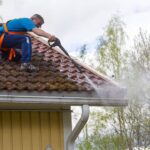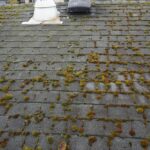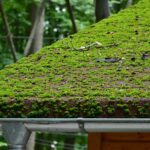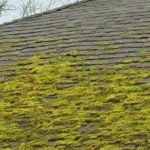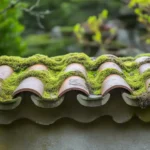As a homeowner, you’ll want to keep your home in top condition. One of the necessary tasks in home maintenance is ensuring your roof is leak-free. If a leak goes unnoticed, it can wreak havoc on your home over time. Learning how to find a slow roof leak can protect your property from extensive damage.
Although it might seem daunting, locating a slow roof leak can be manageable with the right knowledge and approach. By understanding where and why these leaks occur, you can efficiently address the problem before it leads to significant water damage. In this guide, we will explore the essential steps to identify and tackle roof leaks.

Understanding Slow Roof Leaks
Before diving into the process, let’s first understand what a slow roof leak is. Unlike sudden leaks resulting from major roof damage, slow leaks occur gradually, often starting as minor water intrusions that worsen over time. They might not be immediately visible, making them a stealthy threat to your home.
Common Causes of Slow Roof Leaks
Several factors can contribute to the development of slow leaks:
- Worn-out Shingles: Over time, shingles can become cracked or curled and allow moisture to penetrate.
- Faulty Flashing: Flashing that is improperly installed can lead to water seeping beneath roof layers.
- Clogged Gutters: Blocked gutters cause water to pool and seep into the roof’s edges.
- Improper Ventilation: Poor ventilation can cause moisture build-up, leading to rotting and leaks.
Signs of a Slow Roof Leak
The following indicators can signal that you may have a roof leak:
- Stains on Ceilings or Walls: Water stains or discoloration on your ceilings or walls are among the first signs of a leak.
- Mold or Mildew Growth: Excessive moisture leads to mold, which can appear on ceilings or walls.
- Strange Odors: A musty smell might indicate mold due to water infiltration.
Inspecting Your Roof
Spotting a slow roof leak requires a careful and comprehensive inspection. Here are some suggested steps:
Exterior Inspection
Begin by examining the roof’s exterior:
- Check Shingles: Look for any that are missing, damaged, or otherwise compromised.
- Inspect Flashing: Ensure all flashing is intact and properly sealed.
- Examine Gutters: Clean out any debris and ensure proper water flow.
Interior Inspection
Next, move inside to identify clues that may indicate a leak:
- Roof Maintenance: Regular inspections can help prevent possible leaks in the rainy season.
- Check for Stains: Look at ceilings and top-floor walls for signs of water stains.
- Detect Moisture: Use a moisture meter for precise detection of moisture levels in suspicious areas.
Consulting Professionals
If you cannot confidently identify the source of a leak or feel unsafe inspecting your roof:
- Hire a Roofer: Professional roofers have the expertise and tools necessary for a thorough examination.
- Preventative Tips: Avoiding certain habits can help maintain roof integrity.
Repairing a Detected Leak
Once you’ve identified the leak’s source, taking swift action is crucial:
- Patch Up Minor Leaks: Use roof patch material or sealant for simple fixes.
- Replace Damaged Shingles: If the shingles are severely damaged, replacing them may be necessary.
- Roof Shingle Care: Proper cleaning can extend shingle life.
Preventative Measures
Taking steps to prevent leaks is as important as repairing them. Here’s how:
- Regular Inspections: Schedule regular checks, especially after severe weather.
- Gutter Maintenance: Keep gutters clean to ensure efficient water drainage.
- Tree Trimming: Keep tree branches from touching the roof to prevent wear and tear.

FAQs
- What are the main signs of a slow roof leak? Water stains, mold growth, and strange odors are primary indicators.
- Can I find a roof leak myself? Yes, by following systematic exterior and interior inspections.
- What should I do if I can’t find the leak? Consider consulting a professional roofer for a detailed assessment.
This article contains affiliate links. We may earn a commission at no extra cost to you.




